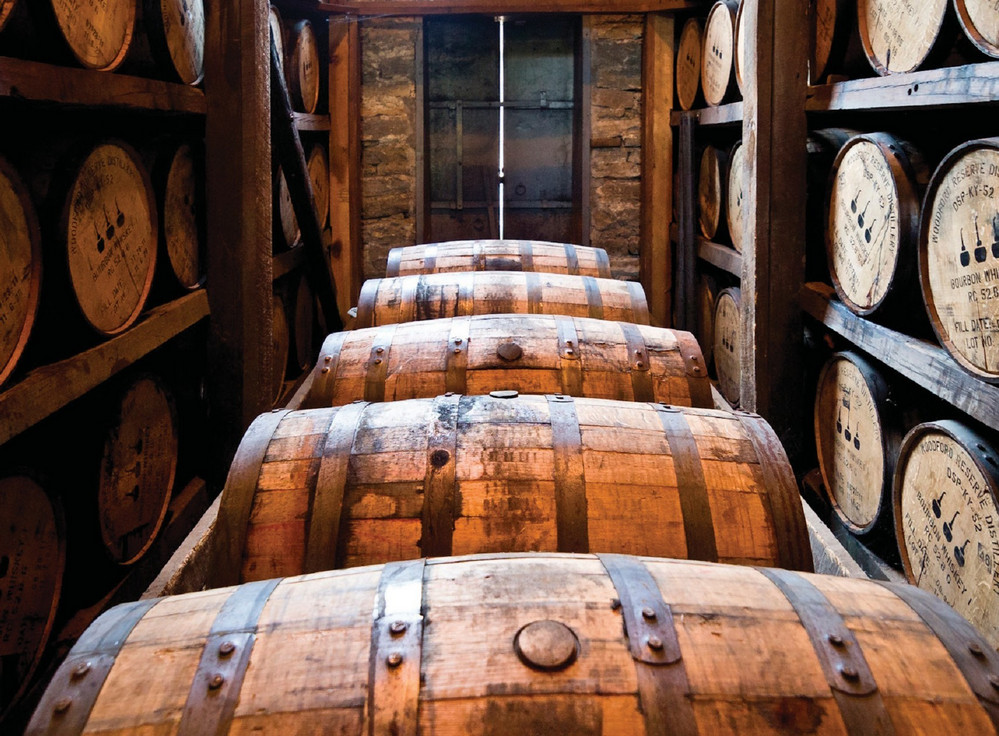Napa Valley Vintners Hit the Bourbon Trail
With the rise of the cocktail culture and the craft distillation movement, the growing market of sophisticated drinkers has rekindled a passion for high-quality spirits, especially Bourbon. Over the past decade, Bourbon has evolved into a savvy market of boutique, handcrafted labels, some fetching more than $3,000 a bottle. Bourbon’s credibility as a quality spirit did not happen overnight. Since its introduction in 1789, it’s had a sullied reputation, often associated with raucous men drinking cheap hooch from a shiner. Some of Bourbon’s newfound allure is attributable to the panache inherent with the boutique producers, each touting a unique mash, process, or flavor style. But Bourbon’s authenticity remains the same. Among other things, to be classified as Bourbon, it must be made of a grain mixture that is 51% corn, distilled to no more than 160 (U.S.) proof, aged in new, charred, oak barrels and produced in the United States.
While some distillers are branching out across the U.S., 95% of Bourbon comes out of Kentucky. Over the past 5-7 years, Kentucky’s Bourbon Trail has grown exponentially, resurging to become a world-class attraction and premier hunting ground for Bourbon enthusiasts. The region carries a cachet of prestige, similar to what Napa Valley has become for wine habitués and Cabernet Sauvignon, so it’s not surprising to learn it’s developed a particularly strong following among premium wine collectors and vintners.
JOHN SCHWARTZ & KENT JARMAN – LONE WHISKER
John Schwartz & Kent Jarman are considered trailblazers in the “adventurous vintners” movement of Bourbon making. Their label, Lone Whisker, was founded long before Bourbon became a trend. The two became close friends over a couple decades as esteemed Napa Valley wine producers, John best known for his labels Amuse Bouche and Au Sommet, created in partnership with Heidi Barrett, and Kent, as head winemaker for Kenefick Ranch and for his and John’s joint label, Coup De Foudre. Along with their interests in making and drinking high-caliber wines, they share a love for gourmet food and great Bourbon.
Lone Whisker was the outcome of a weekend trip Kent and John took on Kentucky’s Bourbon Trail. While there, they fell in love with the area and decided they wanted to create their own Bourbon label. Before they left, they signed a deal with a distillery. While driving back, they came upon a pick-up truck that had flipped over on the side of the road. In the bushes nearby was an abandoned old dog with a collar tag that read “Whisker.” They ended up adopting the dog—and a name for their Bourbon label.
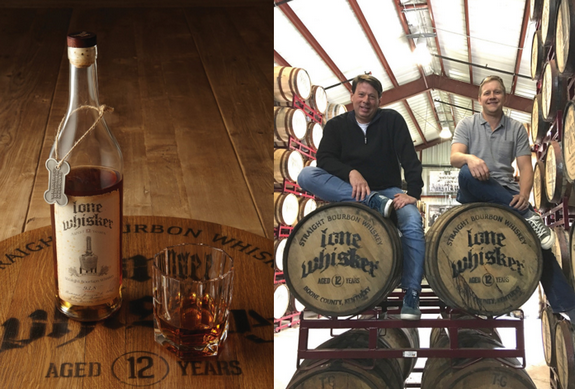
The Lone Whisker project was a long time in the making. The first batch was distilled in 2005 but was not released until 2017. Leveraging their refined palates honed from years of wine- making, John and Kent work closely with their distiller in Kentucky to create their custom mash recipe. After the distilling process, they age it in new oak barrels for twelve to fifteen years. Today Lone Whisker produces approximately 2000 bottles per year and is sold on al- location, limited to one bottle per customer. Not surprisingly, it sells out before it’s bottled. John and Kent intend keep their production small so they can focus on quality. Their secret sauce is the blend of their mash bill, comprised of 74% corn and a blend of rye and barley. The result is a high-quality, low-proof, sipping Bourbon with a flavor profile that is designed to maintain its continuity year after year.
As a trained chef, John enjoys creating dishes that pair well with Bourbon. “I’m a purist. A good Bourbon should have a full mouth-feel but not dominate the palate.” When asked what the future holds, John says “My ultimate goal is to educate the world about the qualities of world-class Bourbon. I’d love to see it become a natural presence on food pairing menus and ulti- mately become part of the dinner table.”
By the end of the year, Lone Whisker will be releasing its first 15-year-old ultra-premium label, “Dogfather.” With only 250 bottles produced, it is sure to become man’s best friend.
Besides possessing proficient olfactory systems and trained palates, winemakers understand the importance of barrel flavoring and building upon a strong base, whether it be the caliber of the grapes or the composition of the mash bill. From a business perspective, they have experience working the traps selling products in the alcohol industry, and most have an established reputation with followers who are loyal to their brand.
MARK & SHERRI CARTER – OLD CARTER WHISKEY COMPANY
Mark and Sherri Carter’s foray into the Bourbon business was unplanned. Best known for producing consistent 100-point Napa Valley Cabernet Sauvignon under their Carter Cellars label, they were having a routine meeting with a family friend discussing prospects of a custom crush opportunity. During the discussion, they became intrigued by a story about the family’s old Bourbon label, Kentucky Owl, which had been shut down by the Feds during prohibition. Instead of signing on a new crush client, they entered into a partnership to revive Kentucky Owl.
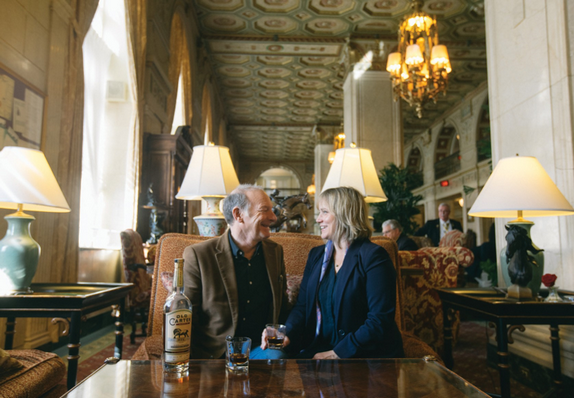
Not having any background in the spirits business, it began as a passion project, but they soon realized they could use their experience making wine to bring unique nuances to the quality of the product. Mark says “We understand the significance of taste and the importance of barrels and blending. After years of tasting so many different wines, we’ve developed refined palates and recognize the subtleties of barrel flavors. So the very first thing we did was bring barrels into the program.” Using double barrels and different char levels to infuse more oak into
the process, Mark and Sherri have mastered a blending technique that they feel makes all the difference in the finished product. Sherri says “This is not a one-level thing. It’s all about the flavor profiles. After years of tasting wine, I use the library of flavors that I have accumulated in the sensory part of my brain and focus on building a whiskey blend that imparts quality, texture, and flavors.”
Kentucky Owl went on to become a cult-style label that captivated the circles of Pappy Van Winkle drinkers. The project ended after a few short years in 2017 when the brand was acquired by SPI Group, best-known as the producers of Stolichnaya vodka.
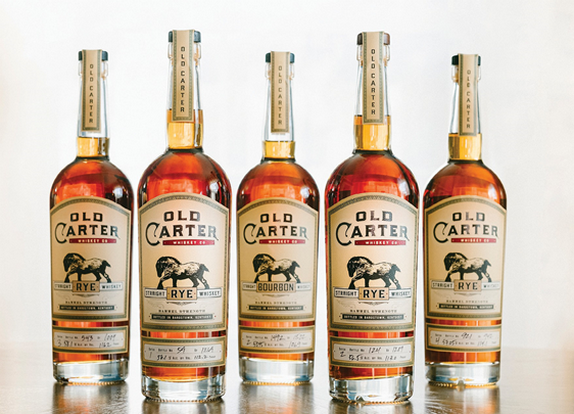
Bourbon has evolved into a savvy market of boutique, handcrafted labels, some fetching more than $3,000 a bottle.
But Mark and Sherri were hooked. The very next day, they began searching for barrels and launched their own Bourbon label, Old Carter Whiskey Company. Their strategy with Old Carter is to take things to the next level. The portfolio is a mix of barrels of rye, bourbon and American Whiskey at various stages of maturation. In addition to purchasing aged product, they are also distilling new-make in the state of Kentucky using their own custom mash bills. They are committed to quality over quantity, and it shows in all of their releases to date. Each batch is a blend of just a few barrels with yields ~1200 bottles per release. From the original label design created and numbered by hand through Sherri’s amazing artistic talent, their double barreling process, and atten- tion to blending, they stay close to their product. By doing so, they have discovered unique ways to differentiate their offerings, including a newfound love for Rye and American Whiskey.
The Carter’s run in the world of whiskey has been a whirlwind and at the same time, a patience game. While they have been busy creating and releasing products, they are also sitting on barrels which they won’t see in the market for nearly a decade. Focused on what is happening now, the Carters have not thought much about what’s ahead. When asked where they want to be in five years, they smile and say “Anything’s Possible.”
JOHN CALDWELL – JFC WHISKEY
John Caldwell is one of Napa Valley’s early winery pioneers. A maverick from the be- ginning, his most defining foray is his notoriety as the guy who successfully smuggled French grape clones into California in the early ‘80s in empty shoeboxes, a feat that ultimately ended up negotiating the first North American licensing agreement with the French Government to import and sell certified ENTAVINRA wine grape clones.
Planted back in 1981, Johns’ life work is now one of the most genetically diverse vineyard holdings in the state. His 123-acre property boasts 27 different clonal Bordeaux varietals from which he crafts 21 different Caldwell estate wines. In 2014, under the expert oversight of Master Cooper, Ramiro Herrera, John began his own custom barrel program acquiring oak from ancient French oak trees directly from the source in France.
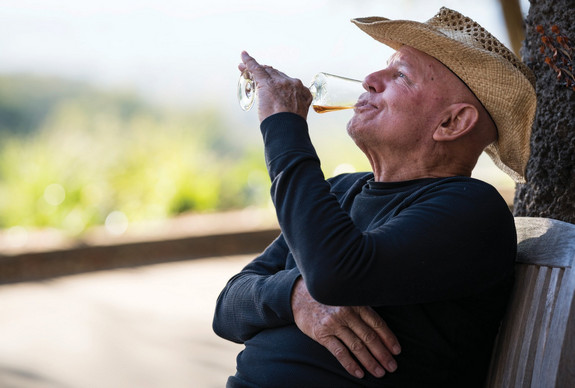
While John is recognized for his four decades of growing grapes and making wine, he is new on the Bourbon scene. After trying it a few times, it never impressed him as a quality product. Several years ago, some “friends from down south” turned him on to Angels Envy, a Kentucky Bourbon finished in Port wine barrels. He liked the stuff so much, he later tagged along, just for fun, on a client’s profession- al whiskey buying trip to Kentucky. “I got down there and met with guys and started tasting through what they were doin’ and realized this was the real deal. These guys have been making this s*#t for over 200 years. I had to be part of it and bought nine barrels on the spot.”
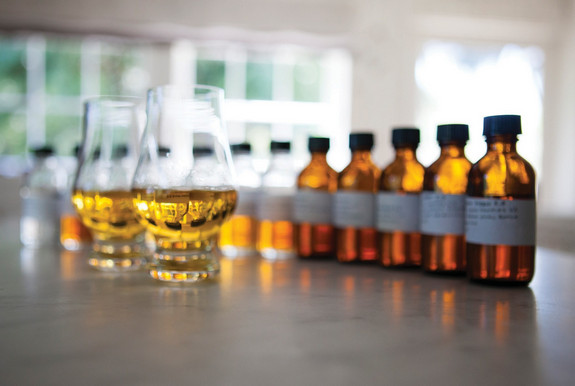
Ready to release the first of his JFC Whiskey (which stands for John F*@%ing Caldwell) in 2020, John’s strategy focuses on the finishing process. He buys single barrels of his favorite Bourbon at various stages between three and 15-years of age, then blends and finishes it in his Caldwell Port barrels for an additional six to twelve months. “Finishing Bourbon in a sweet oak barrel cuts the hotness and reduces the tannins. Because we use our own Caldwell Port barrels, we get to do all kinds of trials. We can create different flavor profiles through the various stages of the finishing process, which gives us ultimate control to make the really good stuff.”
John likes to enjoy a three-finger whiskey nightcap or “mood-changer” as he calls it. He says, “Let’s face it. Wine is great with dinner or if you want to relax, but with Bourbon, you get to a whole different place.”
Article By: Laura Larson

